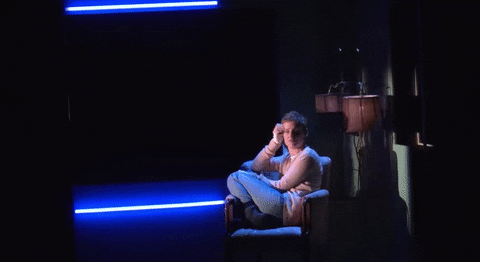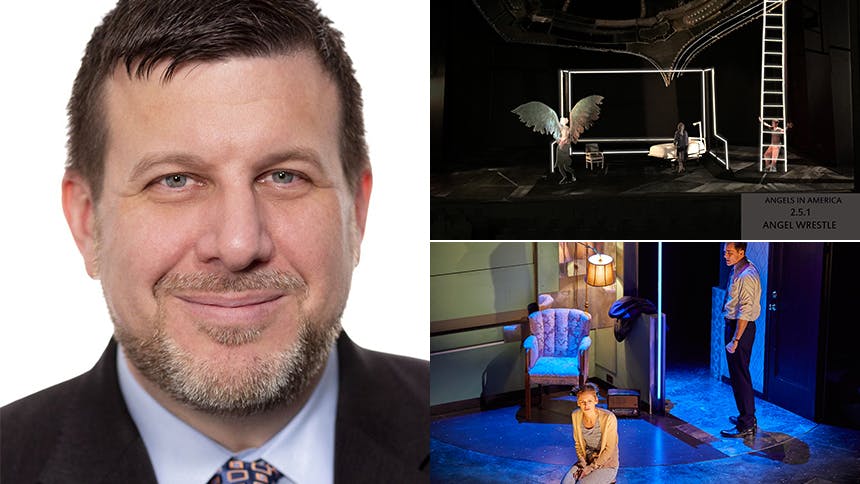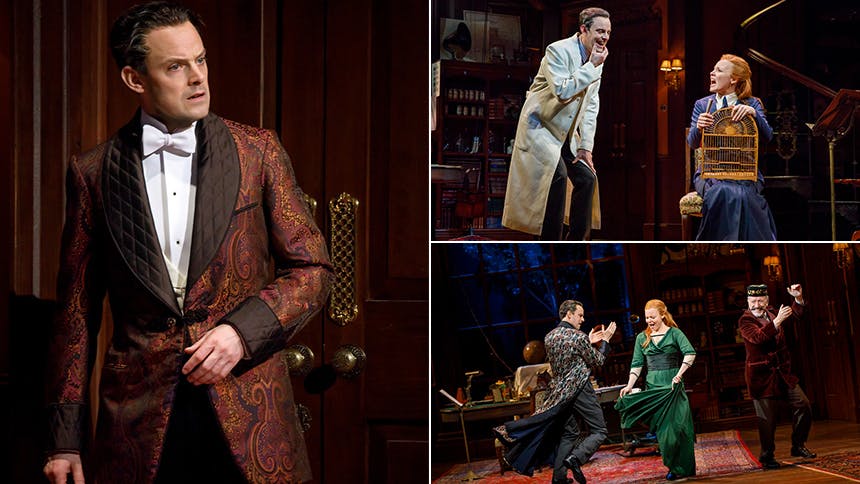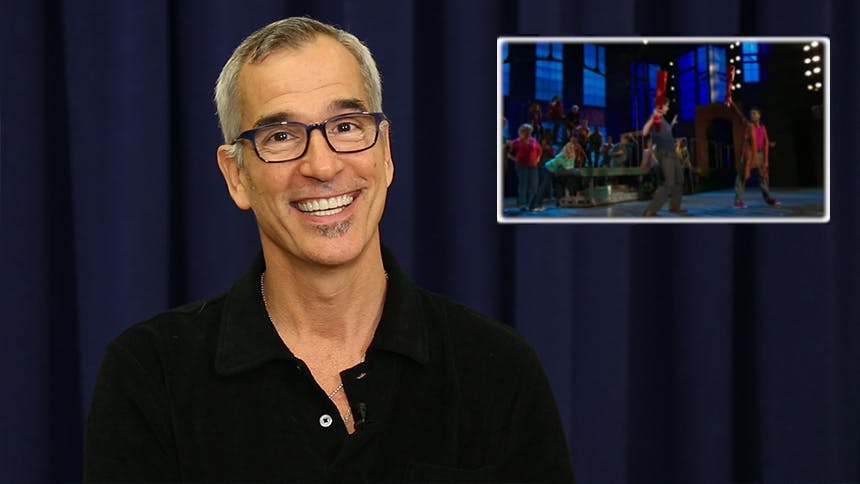Edward Pierce is nominated for his first Tony Award for his design adaptation of the record-breaking Broadway revival of Angels in America
. Edward made his Broadway debut in 1995 as a scenic assistant on The Tempst and has since worked on fan favorites like Ragtime, Wicked, Aida, Pippin, The Other Place, Holler If Ya Hear Me, and Bright Star.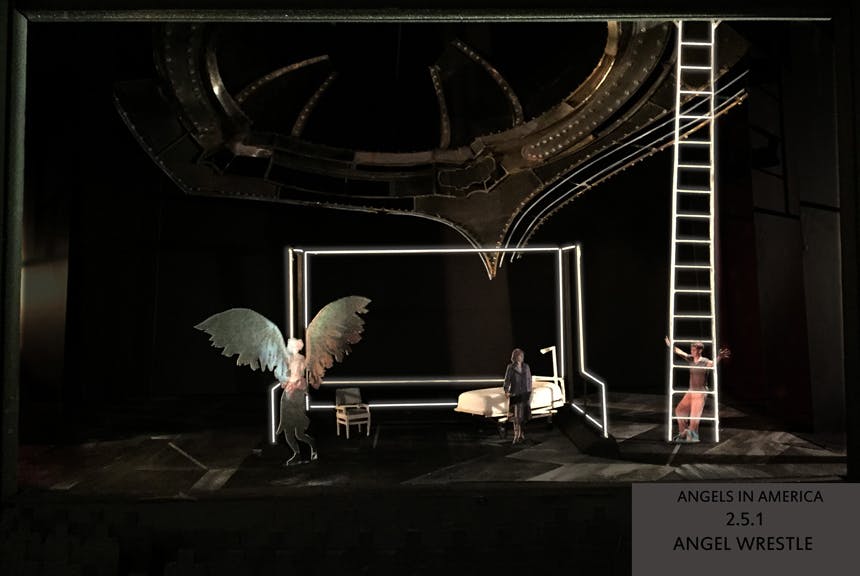
BroadwayBox caught up with Edward as he revealed 10 set secrets you might not know or notice from Angels in America: Millennium Approaches and Angels in America: Perestroika.
1. One major thing people probably don’t realize is that designing an empty space is actually incredibly difficult. As we journey through both plays, both the characters and the design follow a path of slow deconstruction—a slow removable of who they are and what they are and the things that surround them. The arc of the design starts with more realistic walls, places, and furnishings (with slight representations of neon light to outline and underscore), and by the time we get to the very end there’s really nothing left. In fact, we fly out all the masking and we see the raw empty space.
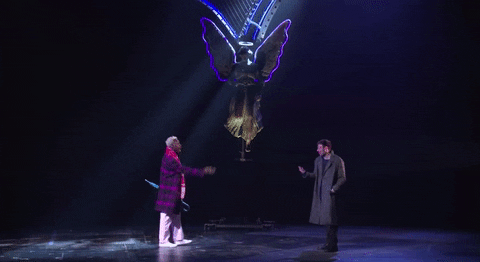
2. By the plays’ end, we’ve hidden everything—all the walls, all five hospital beds, and the piles and piles of furniture are all squeezed away in a million little corners. It’s not a big Broadway theatre, so we have stuff hidden in the basement and hallways. We have incorporated every way you can hang a piece of scenery. It’s total Tetris. We spent weeks doing drawings that show what happens at every interval.
At every interval, that big lift for Roy’s apartment comes up, we load a bunch of stuff in or out of it, shuttle it downstairs to the basement, and spread it all out. There’s really no room to move anywhere. You can do one act, then you have to totally reset yourself before you can do another. And it all literally only fits one way. The crew is amazing!

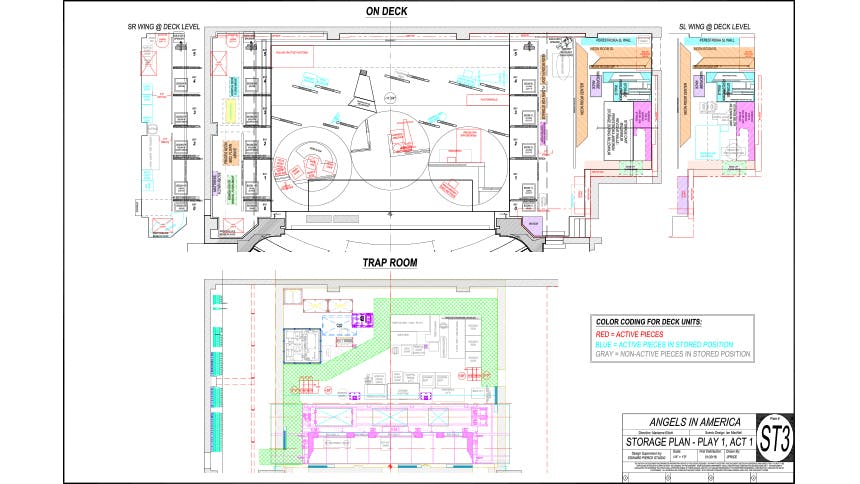
3. We created the most elaborate phone you’ve ever seen on Broadway for Nathan Lane’s first scene at the desk. First of all, it looks cool and old, but that’s just for show. Inside of it is a whole computer system. Part of Nathan’s comedic acting in that scene truly relies on him hitting the button exactly when he wanted to hit the button. That triggers a sound cue on the sound console and a light cue, so that all the lights on the phone start blinking different coordinated ways. When he goes onto line three, line three lights up and all the other lines are blinking; then he goes to line five and that one lights up. It’s highly coordinated and all in real time, so Nathan has total control over the energy of that scene and how he moves it along.
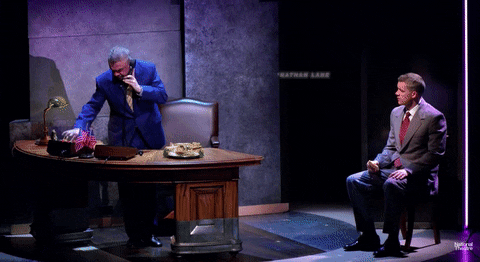
4. The first two acts in Millennium involve the use of three turn tables that help us transition between 30 and 40 scenes. Then, when Harper has her hallucination going to Antarctica, the world of reality drifts away from her all the way upstage. We are on a big rake stage that tracks all the way upstage and that leaves a negative space downstage where this revolve used to be. Then, we have this massive lift that’s 30 feet wide and 12 feet deep that fills that portion of the stage where the revolves were. It literally moves only one foot. But we had to excavate out half of the Neil Simon floor and basement to be able to install this massive lift that simply moves the stage floor up one foot for that move.
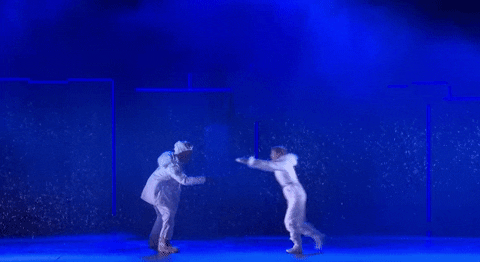
5. When we change over between shows, we have about an hour and a half on two-show days to swap all the furnishings and reset for the top. All the spinning walls have been reengineered to be able to be unclamped from the floor and manhandled by the stage crew, one at a time, into a large storage barge off in the stage left wing. Again, like Tetris, all these walls get put into this one four-foot by ten-foot storage container that gets hoisted up above heads in the wings. Then, they lay a new flooring material over the entire stage to cover up any of the turn table engineering and so that we have a nice clean playing surface for Perestroika. It’s all done within 90 minutes, and it’s like a pit crew—everyone has their assignments down to a science.
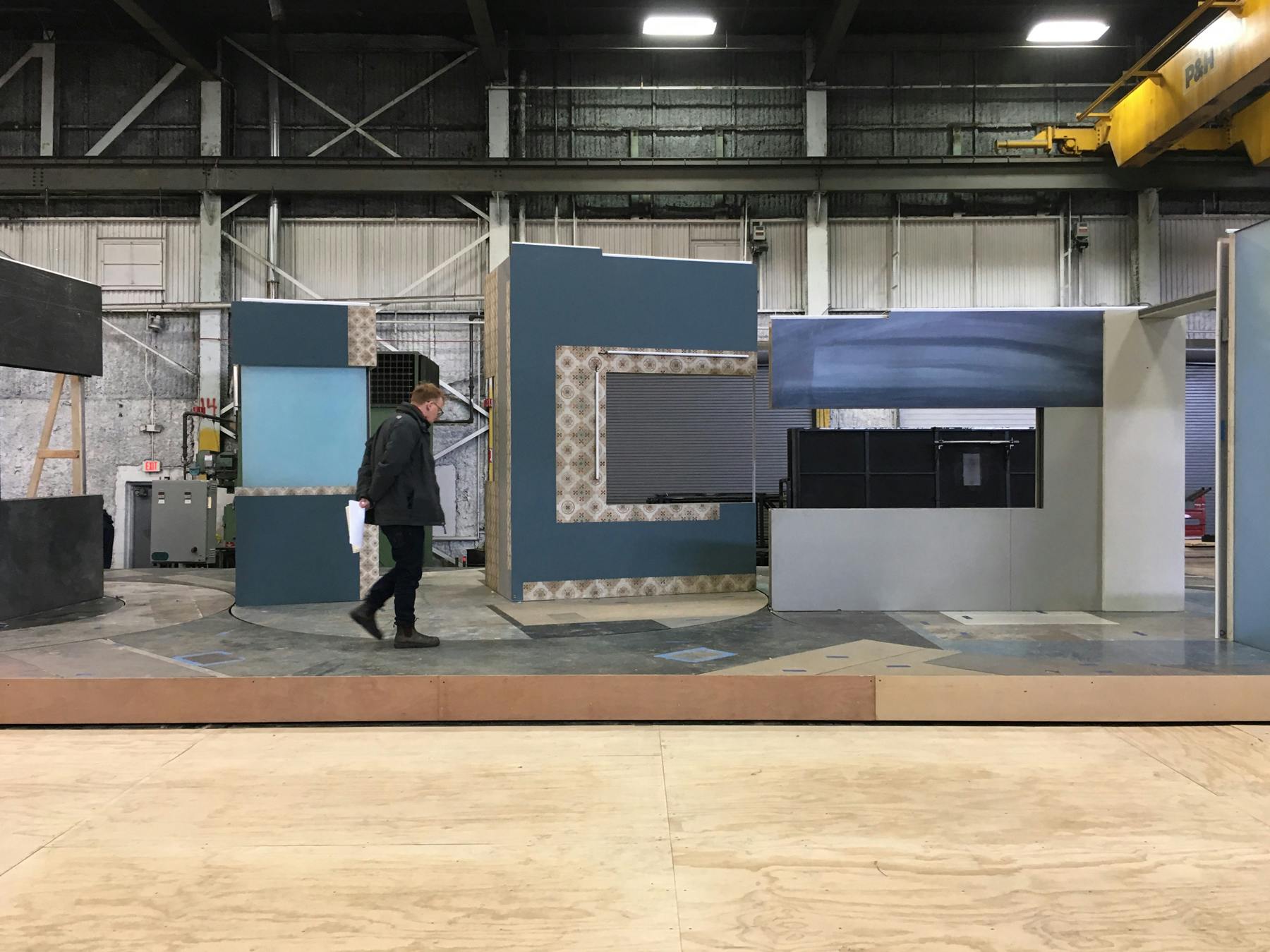
6. Once we are in Perestroika, we employ a rover lift. There are three or four locations on the stage where we deliver props, people, or furniture. To do that (instead of having three individual lifts to do those moves in the very crowded basement where we are storing everything), we have one lift that goes up and down and can be moved on rails—like railroad tracks. We slide it from one location underneath the stage to another location underneath the stage, and then open up trapdoors above. There’s this whole choreography of lifts moving around the basement simply to bring up a pile of books or take Prior up or take Prior down. This is all happening below the stage all night long.
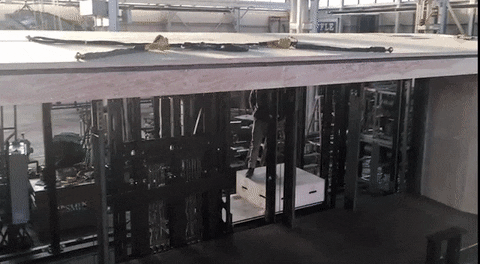
7. When we get to the end of Perestroika, we’ve flown everything away, and that is actually the back wall of the Neil Simon Theatre. Often a lot of shows and designers need to build fake brick walls with radiators and steam pipes, and we were just blessed with an actual, beautiful brick wall that we’ve done absolutely nothing with.
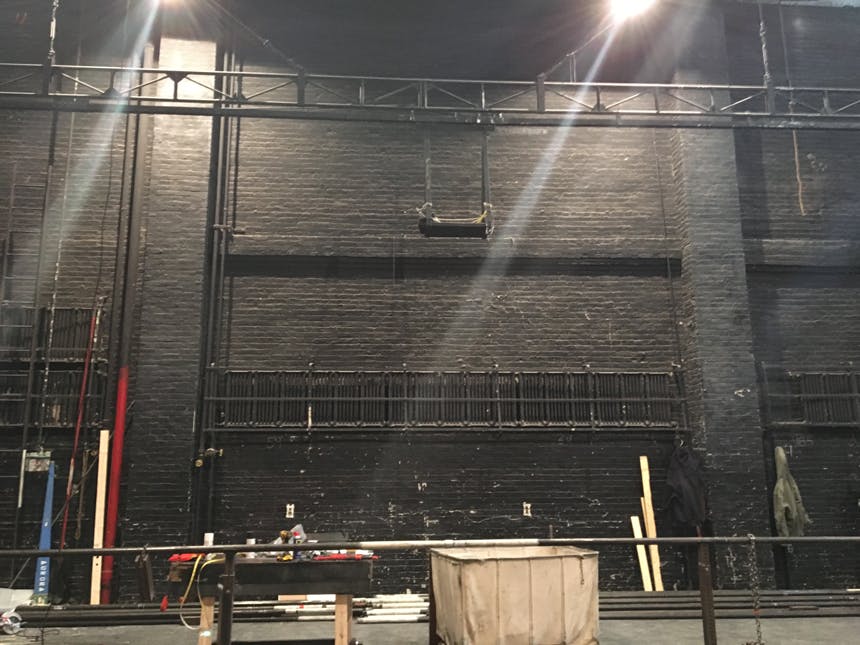
8. There’s a lot of atmospheric effects in the show. We have snow of varying kinds—paper snow, plastic snow, soap snow. We have fire—a flaming bible comes shooting out of the floor. But to me, one of the simplest but most elegant effects we have is the rain effect. With a little blue downlight on it, it looks like beautiful rain fall that slightly bounces off the floor. To achieve that, it’s three different little sizes of plastic beads—just about a millimeter in diameter. They have just enough weight that they fall irregularly and have the bounce of water bouncing off the street.

9. A little scenery lighting integration that I find interesting is that the production uses a technology called LightStrike. In Millennium, it was important for the lighting design and set design to come together to carve out the spaces we create with furnishings on the revolves. So, directly overhead of each circle of turntables, there is one very special moving light that’s exactly hung at the center point of the turntable and pointing straight down. Then the automation computer that turns the turntables around various locations and speeds (some cues lasting five minutes long as the scene slowly turns one degree every minute) is directly connected to the lighting console through this intermediate program called LightStrike. So that as this thing is turning, the lighting computer gets real-time feedback as to where revolve is, and the lighting shutters are adjusting exactly to the wall as it’s spinning.
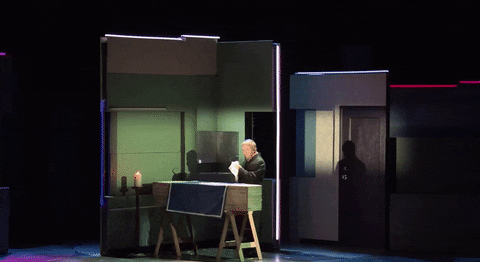
10. Now for a bit of old-school theatre magic that’s really used in Perestroika a lot when actors and actresses appear or disappear. When people walk off the stage, you don’t see them exit to the wing; they just disappear. That’s achieved by truly black magic. We have a series of black velour illusion panels that are manipulated by the stage crew—who are wearing completely black, head-to-toe ninja suits, even covering their faces with just a small tiny slit for their eyes. Then the lighting is so tight, that it’s like magic. You see the actor, but you don’t see that two feet upstage from them there’s literally two stagehands in black suits holding a panel that someone just walked through. You don’t see them at all and that happens all night long. Now that I say it you’ll be very aware of it. It’s highly choreographed and carefully lit.
